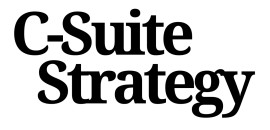
Understanding the power of roarleveraging in executive strategy
Unlocking the True Value of Leverage in Business
In today’s competitive landscape, the power of leverage is a critical driver for business success. For CEOs and executive teams, understanding how to amplify impact through strategic leverage can transform the way your company operates, grows, and competes. Leverage is not just about financial tactics—it's about maximizing the potential of your people, time, resources, and brand to achieve greater results with less effort.
Leverage strategies come in many forms. Financial leverage, for example, involves using fixed costs and capital to scale profitability. Operating leverage focuses on optimizing processes and resources to reduce costs and increase output. Human capital leverage means empowering your team to deliver more value by aligning their strengths with your business goals. Each approach can unlock new levels of efficiency and growth, but the real impact comes from integrating these strategies into your overall business model.
- Time leverage: Streamline workflows and delegate effectively to free up leadership focus for high-impact decisions.
- People leverage: Invest in talent development and cross-functional collaboration to multiply your team’s capabilities.
- Resource leverage: Optimize the use of technology, data, and partnerships to extend your reach and reduce operating costs.
Consider how leading organizations use data-driven insights to inform decision making and identify hidden opportunities. By leveraging work smarter, not harder, you can amplify your company’s impact across marketing, product development, and customer experience. For a deeper dive into how marketing leaders are enhancing business strategy, explore enhancing business strategy with CMO insights.
Ultimately, the goal is to create a business plan that harnesses the full spectrum of leverage—financial, operational, and human—to drive long term business growth and profitability. As you move forward, keep in mind that the ability to adapt and sustain momentum will be essential for lasting success.
Identifying hidden opportunities within your organization
Spotting Untapped Value Across Your Organization
Every company, no matter its size or industry, has hidden opportunities waiting to be leveraged. The challenge for business owners and executives is to identify these areas and turn them into real sources of power and profitability. This process is not just about finding new revenue streams, but also about maximizing the value of your existing people, resources, and business model.- Human capital: Your team’s skills and knowledge are often underutilized. By mapping out expertise and aligning it with your business plan, you can leverage work more effectively, reduce costs, and drive business growth.
- Operating leverage: Review your fixed costs and operating expenses. Are there ways to spread these costs over more products or services? This can increase your operating leverage and improve financial performance over the long term.
- Financial leverage: Assess how you use debt or capital to fund expansion. Smart financial leverage can amplify returns, but it requires careful decision making and risk management to avoid pitfalls.
- Brand and marketing: Your brand’s reputation and marketing channels are powerful assets. Leveraging these can open new markets, attract better talent, and increase the impact of your business strategies.
| Area | Example of Leverage | Potential Impact |
|---|---|---|
| People | Cross-functional teams | Faster innovation, better solutions |
| Resources | Shared technology platforms | Lower costs, improved scalability |
| Time | Automated workflows | More focus on strategic work |
| Financial | Debt for expansion | Accelerated business growth |
Building a culture that supports strategic agility
Creating an Environment Where Agility Thrives
For CEOs aiming to amplify business impact, the ability to adapt quickly is a true power lever. Strategic agility is not just about reacting to market changes—it’s about proactively leveraging your people, resources, and time to unlock new levels of success. When your company culture supports agility, you position your team to identify hidden opportunities and maximize the potential of your business model.
- Empower human capital: Encourage teams to challenge the status quo and experiment with new strategies. When employees feel trusted, they are more likely to bring forward innovative ideas that can reduce costs or improve products and services.
- Align incentives with business growth: Structure rewards to recognize those who leverage work and resources for greater profitability. This approach motivates teams to think beyond their immediate tasks and consider the long-term impact on the company’s financial health.
- Promote cross-functional collaboration: Break down silos so that marketing, operations, and finance can work together. This not only improves decision making but also helps identify ways to leverage time and fixed costs for better operating leverage.
- Encourage data-driven thinking: Make data accessible and actionable across all levels. When teams use insights to inform their strategies, they can more effectively leverage business opportunities and drive business success.
Consider, for example, a company that restructured its workflow to enable faster response to market trends. By leveraging the collective expertise of its people and optimizing resource allocation, the company improved its operating leverage and boosted profitability. This demonstrates the power of a culture that values agility and continuous improvement.
Building this kind of environment takes commitment from the top. As a CEO, your leadership sets the tone for how your team approaches challenges and seizes opportunities. For more insights on navigating organizational opportunities and fostering a culture of agility, explore this resource on navigating organizational opportunities.
Maximizing cross-functional collaboration for greater impact
Unlocking the True Value of Cross-Functional Teams
Cross-functional collaboration is a powerful lever for amplifying business impact. When teams from marketing, finance, operations, and product development work together, they unlock new ways to leverage resources, time, and human capital. This approach not only boosts efficiency but also helps identify hidden opportunities for business growth and profitability.- Leverage business strengths: By bringing together people with diverse expertise, your company can create innovative solutions that would be difficult to achieve in silos. For example, marketing and finance teams can collaborate to optimize campaign spend, reducing costs while maximizing brand reach.
- Maximize operating leverage: Cross-functional teams can help you make the most of fixed costs by sharing resources and knowledge. This drives down expenses and increases the potential for long-term financial success.
- Enhance decision making: When teams share data-driven insights, leaders can make smarter, faster decisions. This is essential for adapting your business model and strategies in a rapidly changing market.
Strategies for Effective Collaboration
To fully leverage the power of cross-functional work, consider these strategies:- Set clear goals that align with your overall business plan and vision.
- Encourage open communication and transparency between departments.
- Invest in tools that support real-time data sharing and project management.
- Recognize and reward teams that demonstrate successful collaboration and deliver measurable results.
Real-World Example: Financial and Marketing Synergy
Imagine a scenario where your financial team identifies a spike in fixed costs related to a new product launch. By collaborating with the marketing team, they discover that reallocating resources to digital channels could reduce costs and increase reach. This synergy not only improves profitability but also strengthens your brand and accelerates business growth.Building a Culture of Collaboration
Sustained business success depends on a culture that values teamwork and shared accountability. Encourage leaders to model collaborative behaviors and provide opportunities for teams to learn from each other. Over time, this will help your company leverage work, time, and people more effectively—unlocking the full potential of your products, services, and human capital.Leveraging data-driven insights for smarter decision-making
Turning Data into Actionable Business Leverage
In today’s competitive landscape, data-driven insights are the backbone of smarter decision making. For CEOs and business owners, the ability to harness data is not just about collecting numbers—it’s about transforming information into leverage that powers business growth, profitability, and long-term success.
- Unlocking Potential: Data reveals hidden patterns in your business model, highlighting where your team, resources, and products services are delivering the most value. This clarity helps you focus on what truly drives operating leverage and financial performance.
- Optimizing Resource Allocation: By analyzing costs, fixed costs, and revenue streams, leaders can make informed decisions about where to invest time, money, and human capital. This approach maximizes the impact of every dollar and hour spent, ensuring your company’s resources are working as hard as you do.
- Enhancing Cross-Functional Collaboration: When teams share data openly, it breaks down silos and encourages collaboration. Marketing, finance, and operations can align on strategies that amplify the brand and accelerate business growth.
- Improving Products and Services: Customer feedback, market trends, and performance metrics guide product development and service enhancements. This continuous loop of learning and adaptation keeps your offerings relevant and competitive.
Consider the example of a company that uses real-time sales data to adjust its marketing campaigns. By leveraging data, the team can quickly identify which strategies are working, reduce wasted spend, and improve profitability. This is the power of data-driven leverage in action.
| Leverage Strategy | Data Source | Business Impact |
|---|---|---|
| Financial Leverage | Cost analysis, revenue trends | Improved profitability, reduced costs |
| Operating Leverage | Process metrics, productivity data | Greater efficiency, scalable growth |
| Human Capital Leverage | Employee engagement, performance reviews | Stronger teams, higher retention |
| Marketing Leverage | Campaign analytics, customer insights | Brand amplification, increased sales |
Ultimately, leveraging data is not a one-time project but a continuous process. It empowers leaders to make better decisions, adapt strategies, and drive business success. When you integrate data-driven insights into your business plan, you unlock new levels of power leverage—transforming information into real-world results for your company, team, and brand.
Sustaining momentum through continuous learning and adaptation
Embedding Learning into Daily Operations
For CEOs and business owners, sustaining momentum is not just about keeping up with change—it’s about embedding learning and adaptation into the very fabric of your company. The power of leverage in business comes from the ability to turn every experience, success, or setback into actionable insights. This approach transforms both your business model and operating strategies, ensuring long-term growth and profitability.
Turning Data into Continuous Improvement
Data-driven decision making is a cornerstone of business success. By leveraging data, you can identify trends, optimize resources, and reduce costs. For example, analyzing marketing performance can reveal which channels deliver the highest return on investment, allowing you to allocate time and financial resources more effectively. This not only improves profitability but also helps your team focus on high-impact activities that drive business growth.
- Leverage time: Encourage teams to review and reflect on project outcomes regularly, turning lessons learned into improved processes.
- Leverage people: Foster a culture where sharing insights and best practices is part of daily work, enhancing human capital across departments.
- Leverage resources: Use technology and automation to capture and disseminate knowledge, making it easier for everyone to access critical information.
Building Resilience Through Adaptation
Continuous learning is not just about training sessions or workshops. It’s about creating an environment where your team feels empowered to experiment, iterate, and adapt. This mindset helps your company respond to market shifts, optimize fixed costs, and unlock the potential of your products and services. Over time, these leverage strategies compound, driving sustainable business growth and reinforcing your brand’s position in the market.
Ultimately, the ability to sustain momentum comes down to how well you can leverage work, time, and people to turn everyday operations into a powerful engine for innovation and success. By making learning and adaptation a core part of your business plan, you ensure your company is always ready for what’s next.














